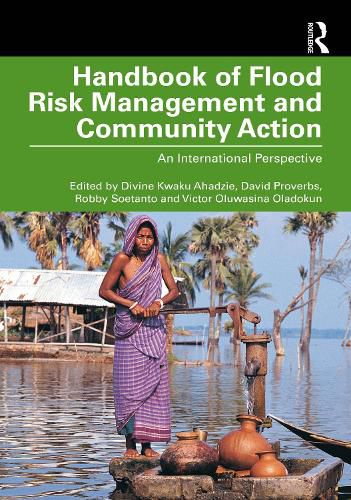Readings Newsletter
Become a Readings Member to make your shopping experience even easier.
Sign in or sign up for free!
You’re not far away from qualifying for FREE standard shipping within Australia
You’ve qualified for FREE standard shipping within Australia
The cart is loading…






Recurring and worsening flood incidence around the world has necessitated the understanding and strengthening of community-based flood risk management from an international perspective.
This handbook emphasises the need for community action as part of an integrated flood risk management approach, highlighting case studies that have received recognition and made positive impacts, resulting in resilience-enhancing actions which can improve global community understanding.
The content has been arranged such that it covers flood risk management approaches in the three main interfaces of before, during and after the flood event. Experts writing on case studies from Africa, Oceania, Europe, Asia and the Americas come together to present lessons from regional and continental experiences that will be useful in providing an understanding of the nature and effectiveness of the human-centred approach. The successful implementation of local and scientific knowledge as complementary measures is also highlighted in a systematic review on the use of technologies for flood risk reduction. This interesting and diverse range of contributions seeks to showcase opportunities for cross-cultural knowledge transfer and uptake in the field of flood risk management.
This handbook is essential reading for researchers, policy makers and leaders involved in flood and disaster management in the built environment, risk assessment, environmental and civil/construction engineering and community action planning.
$9.00 standard shipping within Australia
FREE standard shipping within Australia for orders over $100.00
Express & International shipping calculated at checkout
Recurring and worsening flood incidence around the world has necessitated the understanding and strengthening of community-based flood risk management from an international perspective.
This handbook emphasises the need for community action as part of an integrated flood risk management approach, highlighting case studies that have received recognition and made positive impacts, resulting in resilience-enhancing actions which can improve global community understanding.
The content has been arranged such that it covers flood risk management approaches in the three main interfaces of before, during and after the flood event. Experts writing on case studies from Africa, Oceania, Europe, Asia and the Americas come together to present lessons from regional and continental experiences that will be useful in providing an understanding of the nature and effectiveness of the human-centred approach. The successful implementation of local and scientific knowledge as complementary measures is also highlighted in a systematic review on the use of technologies for flood risk reduction. This interesting and diverse range of contributions seeks to showcase opportunities for cross-cultural knowledge transfer and uptake in the field of flood risk management.
This handbook is essential reading for researchers, policy makers and leaders involved in flood and disaster management in the built environment, risk assessment, environmental and civil/construction engineering and community action planning.